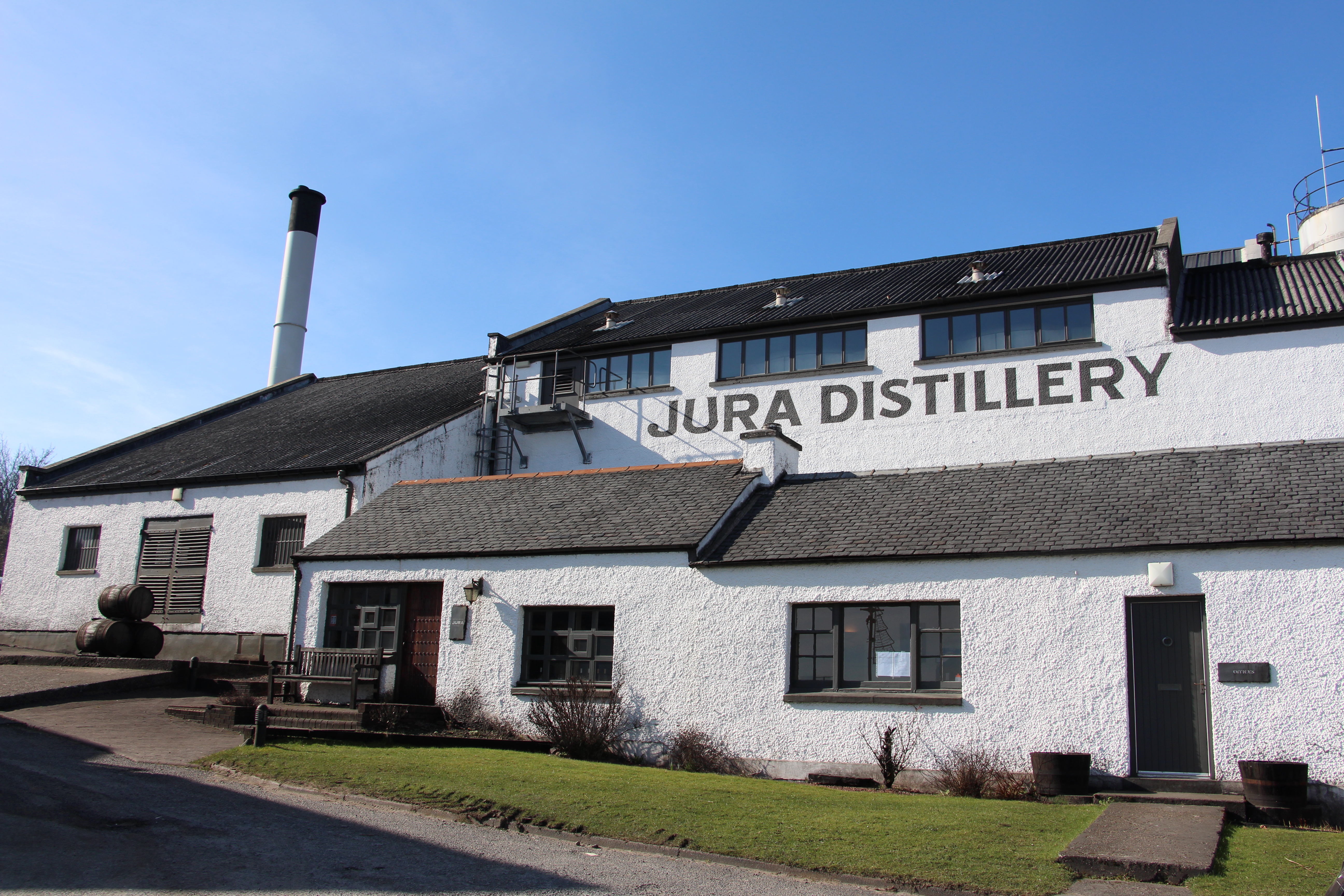The whole point of our trip was whiskey tasting, and I’ve got to say, we did a good job. Not only did we discover two great bars – the Ballygrant Inn on Islay and the Jura Restaurant on Jura – but we also visited two working distilleries.
The first, Glengoyne Distillery, was not one that we’d heard of before coming to Scotland. However, knowing that TCB is not a fan of peated whiskeys, after doing some research, it seemed this would be the ideal one to visit: unlike many other distilleries, Glengoyne never peats its malts.
Our lovely tour guide, Sarah, showed us around the distillery, stopping at the original source upon which Glengoyne was built: most historic Scottish distilleries are built near or on a waterfall, which would have been used for the large quantities of fresh water needed to make the spirit.
At Glengoyne, both American bourbon casks and European sherry casks are used; this exhibit showed what each of the cask types does to the whiskey when it’s been barreled: each bottle represents one year of barrel aging.
Glengoyne is also the only distillery in Scotland that produces Highland whiskey that is matured in the Lowlands: the road that separates the distillery (depicted above) from the warehouses (behind me as I take the picture) divides the two.
The true point of our trip was finally getting the Country Boy to Jura, a distillery he’s been a fan of for years (since my Scottish friend Emily, more commonly referred to as Scotty, first suggested it). I even gave him a limited edition bottle as his groom’s gift when we got married, so to say that a visit to the distillery was a long-time coming is perhaps an understatement.
They were in the process of changing their core range of whiskies during our visit, which meant that even though he’s tried a good ten different bottles from this distillery, there were more than enough new ones for him to try.
But first, we were guided through the distillery by Fiona, who not only explained how the whiskey is distilled but also showed us some actual brews in process. The tour was informative and took us through the history of distilling on Jura as well, specifically some of the details that make Jura whiskey so distinct from the heavily peated whiskeys of Islay.
And then, it was time to drink. TCB tested two of the whiskies in the new line – Journey and Seven Wood – before venturing to more serious stuff: an 18-year-old and 20-year-old whiskey, the latter of which had been selected by the distillery workers as their favorites.
It bears mentioning that he came home with three bottles (and three little serving-size ones that are apparently common throughout Scotland, in case you want to continue drinking your dram at home!)







